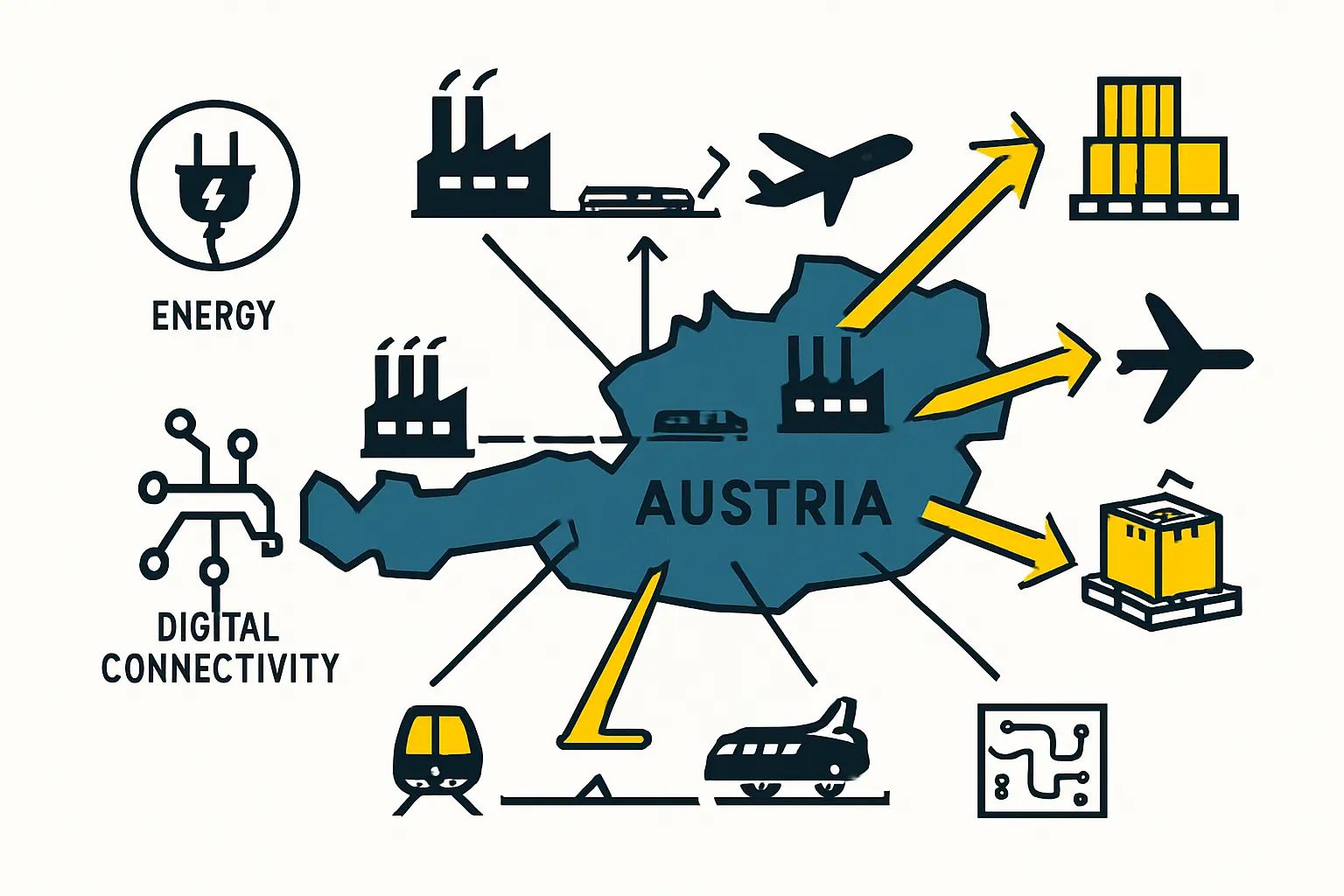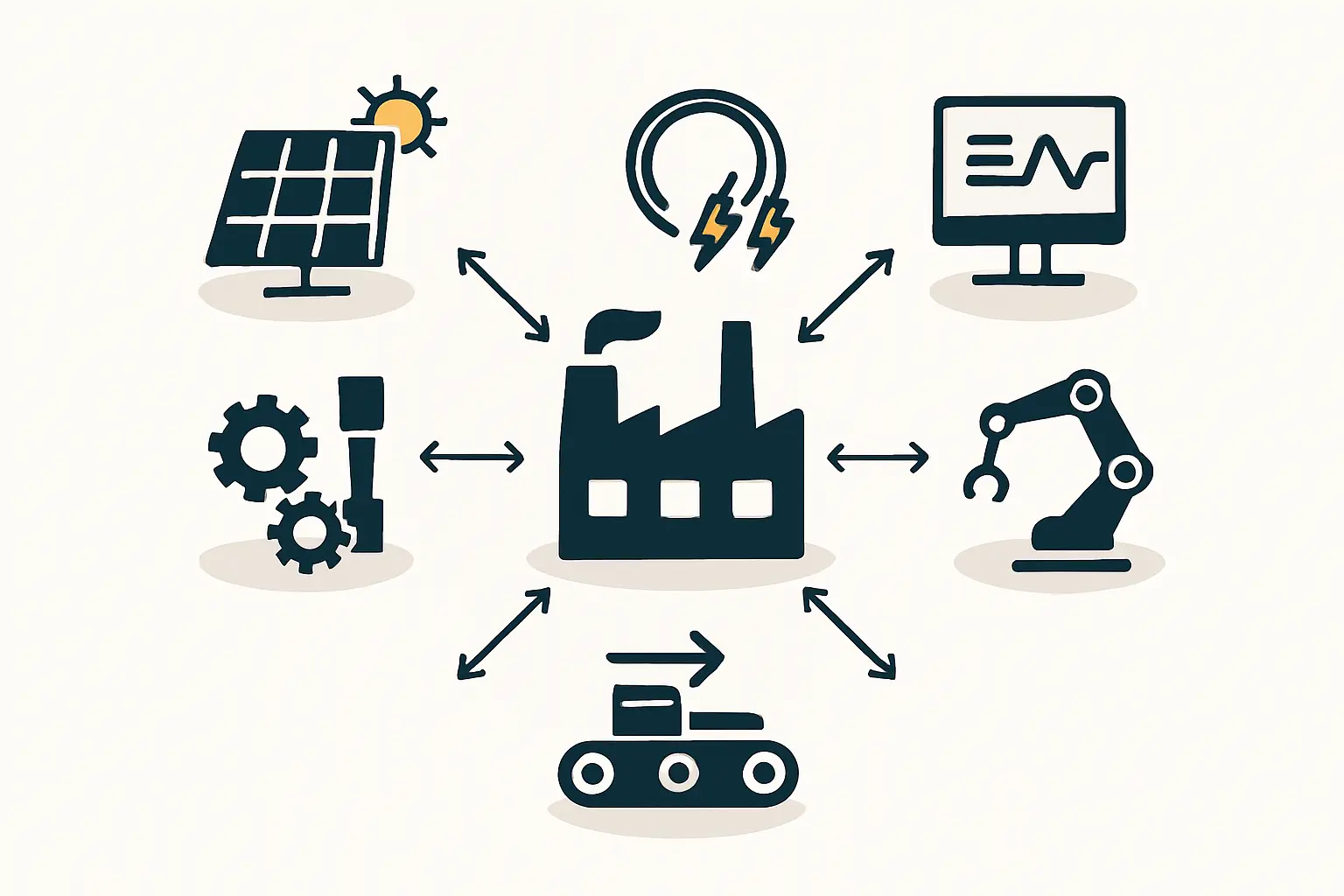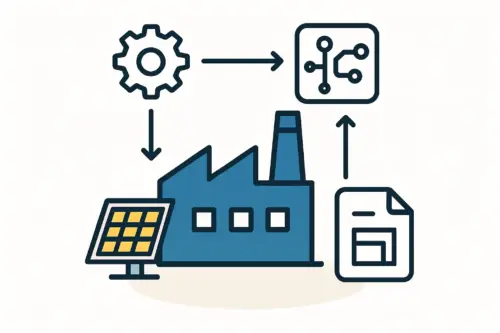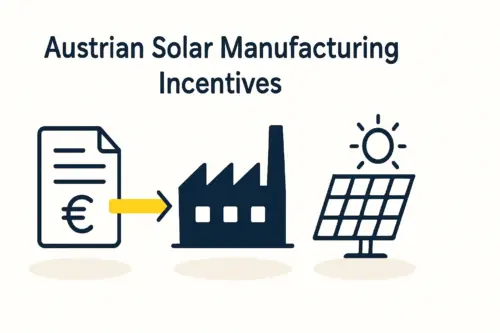Assessing Austria’s Industrial Infrastructure: A Foundation for Solar Module Production
With its strategic location in the heart of Europe and a strong commitment to renewable energy, Austria presents a compelling opportunity for solar module production. Entrepreneurs and investors exploring this venture will find that a thorough understanding of the country’s industrial infrastructure is essential. This guide evaluates the key elements required to set up an efficient solar manufacturing facility in Austria.
Table of Contents
Austria’s Support for Solar Manufacturing
Austria is actively fostering an environment conducive to renewable energy, including solar photovoltaic (PV) production. The country has set national targets for renewables and supports initiatives that bolster domestic manufacturing. A key example is the “Made in Europe” bonus for solar projects using European components, a policy that highlights a strategic push to strengthen the continent’s solar value chain. This direction creates a welcoming climate for new solar manufacturing ventures aiming to contribute to both Austrian and European energy goals.
Ready for a brighter future?
Empower your transition to solar with insights from our free e-course or direct support from our expert services. Let’s make your solar adoption effortless and rewarding.
Industrial Site Availability: Finding Your Factory’s Home
Finding a suitable location is the first critical step. Austria has several established industrial regions well-suited for manufacturing operations.
Key Industrial Regions
Major industrial activities are concentrated in areas such as:
- Vienna and its surrounding regions
- Lower Austria
- Styria
- Upper Austria
These areas benefit from:
- Mature industrial ecosystems
- Skilled labor pools
- Established supply chains
Real estate firms highlight strong demand for industrial and logistics properties, particularly in and around Vienna, indicating a dynamic market.
Types of Sites and Considerations
Options in Austria range from:
- Developed industrial parks with ready-to-use infrastructure.
- Greenfield sites for custom development.
Other key considerations include:
- Zoning regulations – Generally supportive of manufacturing, but due diligence on requirements specific to solar module production is essential.
- Property cost trends – Indicate a competitive market, especially in prime logistics areas.
- Presence of high-tech manufacturing – Such as photovoltaic wire production near Vienna, which showcases the region’s capacity to support specialized industries.

Energy Infrastructure: Powering Your Production Line
A reliable and cost-effective energy supply is non-negotiable for any solar module manufacturing plant. Here, Austria’s energy infrastructure offers several key advantages.
Ready to make big Profits?
The solar Industry is Booming
WE HELP NEWCOMERS to the solar industry start their own solar module production line. Customers can make BIG PROFITS by selling modules and finding investors, without wasting money and time on things they don't need!
Electricity Costs and Reliability
Industrial electricity prices are a significant operational factor. Data shows that prices have fluctuated and are generally comparable to or slightly above the EU median. For instance, industrial electricity prices peaked at 0.170 EUR/kWh in 2022. Prospective investors should monitor current pricing closely, as government measures like electricity price caps or subsidies can impact costs, with some measures set to expire in late 2024.
Beyond cost, Austria’s electricity grid is known for its high reliability—a crucial factor for maintaining continuous manufacturing operations. The International Energy Agency (IEA) has consistently noted the stability of Austria’s energy supply.
Renewable Energy Integration and Grid Connection
A significant portion of Austria’s electricity comes from renewable sources, primarily hydropower, which aligns well with the sustainability goals of solar manufacturing. The Austrian Energy Agency also actively promotes energy efficiency in industry. For a large industrial consumer like a solar module plant, the grid connection process and the capacity of the local grid to handle a substantial load are critical considerations.
Transportation and Logistics: Efficient Movement of Goods
Its central European location makes Austria a natural logistics hub, with a well-developed transportation network to match.
Road Network
The country boasts a high-quality road network, with major highways (Autobahnen) connecting it seamlessly to neighboring countries and key European markets. This network enables the efficient transport of raw materials and distribution of finished solar modules.
Rail Network
Austria has a robust rail freight infrastructure, with companies like Siemens Mobility involved in digitizing the network to enhance efficiency. Intermodal terminals in key logistics hubs like Vienna and Linz, supported by more than a dozen combined transport terminals nationwide, allow for smooth transitions between road and rail.
Air and Waterway Freight
Vienna International Airport is a significant air cargo hub that caters to time-sensitive shipments. For bulkier, less urgent transport, the Danube River offers waterway freight options, with the Port of Vienna serving as a key inland port.
Digital Connectivity: Enabling Smart Manufacturing
Modern solar module production incorporates advanced automation and data management, requiring robust digital infrastructure.

Broadband and Fiber Optics
High-speed broadband is widely available across Austria. The ongoing deployment of fiber optic networks, particularly in industrial areas, provides the high-bandwidth connectivity necessary for smart factories.
5G Deployment and Industry 4.0 Readiness
The rollout of 5G technology is progressing, opening the door for advanced industrial applications like the Internet of Things (IoT) and real-time data processing. Reports indicate that Austria’s infrastructure is well-equipped to support digital systems and smart manufacturing, paving the way for Industry 4.0. This trend is further supported by the European Commission’s Recovery and Resilience Plan for Austria, which includes a strong focus on digitalization.
Assessing the Austrian Advantage
Austria presents a compelling case for solar module production, backed by its strategic location, commitment to renewables, and solid industrial infrastructure. Key strengths include developed industrial regions, a reliable energy grid with a high share of renewables, and excellent transportation and digital networks.

Entrepreneurs considering Austria should conduct detailed due diligence on specific site availability, current energy pricing, and regional incentives. Understanding the local regulatory landscape and labor market will also be crucial. With careful planning, a solar module facility in Austria is well-positioned to become a successful contributor to Europe’s clean energy future.
Frequently Asked Questions (FAQs)
What are the main industrial regions in Austria for manufacturing?
Austria’s primary industrial regions include Vienna and its surroundings, Lower Austria, Styria, and Upper Austria. These areas offer established infrastructure and access to skilled labor.
How reliable is the electricity supply in Austria for industrial use?
The Austrian electricity grid is considered highly reliable, which is essential for continuous manufacturing operations. A significant portion of its electricity is generated from renewable sources, particularly hydropower.
What are the key advantages of Austria’s transport network for a solar factory?
Austria offers a dense and high-quality road network, efficient rail freight connections to major European hubs, air cargo facilities via Vienna International Airport, and waterway access through the Danube River. Its central location in Europe is a significant logistical advantage.
Is Austria’s digital infrastructure suitable for smart solar manufacturing?
Yes, Austria has strong digital connectivity, including widespread high-speed broadband, expanding fiber optic networks, and ongoing 5G deployment. This infrastructure supports the implementation of smart factory concepts and Industry 4.0 technologies.
Are there specific incentives in Austria for solar manufacturing?
Austria supports renewable energy and has introduced measures like a “Made in Europe” bonus for solar projects using European components. Businesses should investigate specific national and regional incentives available for manufacturing and investment in the renewable energy sector.






